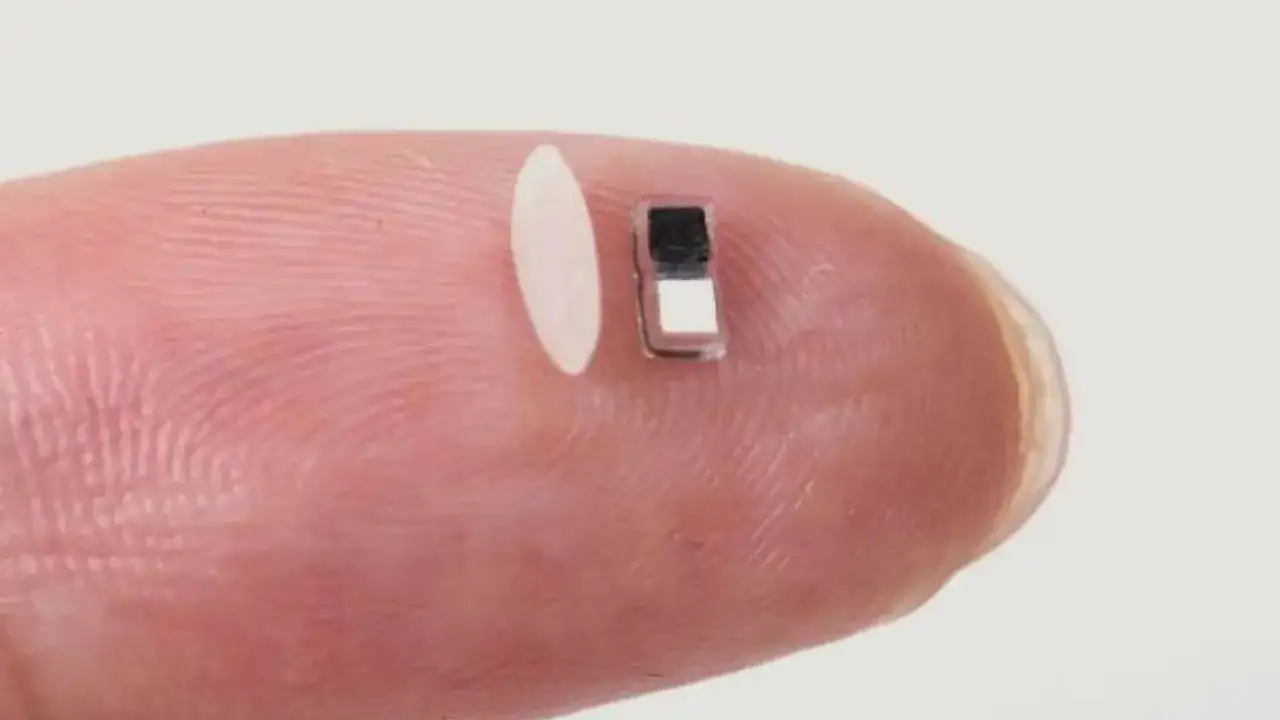
The pacemaker is paired with a small, soft, flexible, wireless, wearable device that mounts onto a patient’s chest to control pacing (Pic: SWNS)
Scientists from Northwestern University have created the world’s tiniest pacemaker—smaller than a grain of rice—to help babies born with congenital heart defects live. This ultra-miniature device can be inserted with a syringe and dissolves after it is no longer needed.
Even though it works with hearts of all sizes, the engineers who created it say the pacemaker works best for tiny, fragile hearts of newborn babies. The chip measures around 1.8 millimeters in width, 3.5 millimeters in length, and one millimeter in thickness but works as efficiently as a full-sized one.
How does the miniature pacemaker work?
According to the scientists, the pacemaker is paired with a small, soft, flexible, wireless, wearable device that mounts onto a patient’s chest to control pacing. After it detects an irregular heartbeat, the pacemaker automatically shines a light pul activating it.
The short pulses, which penetrate through the patient’s skin, breastbone, and muscles, can control its pacing.
How does it dissolve?
Since the components of the pacemaker are biocompatible, scientists said it is designed in a manner that it can only help in temporary pacing and simply dissolves after its services are no longer required.
The team of engineers from Northwestern explained that the pacemaker’s components are biocompatible, so they naturally dissolve into the body’s biofluids, bypassing the need for surgical extraction. A study published in the journal Nature shows the device’s efficiency across several large and small animal models as well as human hearts from deceased organ donors.
“We have developed what is, to our knowledge, the world’s smallest pacemaker,” said Dr. John Rogers, Northwestern bioelectronics pioneer, who led the development project.
Around one per cent of kids are born with congenital heart defects - regardless of whether they live in a low-resource or high-resource country. “There’s a crucial need for temporary pacemakers in the context of pediatric heart surgeries, and that’s a use case where size miniaturization is incredibly important. In terms of the device load on the body — the smaller, the better,” Dr. Rogers added.
According to Dr. Rogers, kids born with heart defects only need temporary pacing after surgery, and repair happens within a week. However, the first few days after the surgery are absolutely critical.
Dr. Rogers also said after the temporary pacemaker is no longer needed, surgeons remove the electrodes. However, there are many potential complications, which include infection, dislodgment, torn or damaged tissues, bleeding, and blood clots, all of which can damage the heart muscle.
Northwestern is confident that the technology’s versatility has opened other possibilities for use in bioelectronic medicines, including helping nerves and bones heal, treating wounds, and blocking pain. Since it is very small in size, the pacemaker can also be integrated with almost any kind of implantable device.
Get Latest News Live on Times Now along with Breaking News and Top Headlines from Health and around the world.
